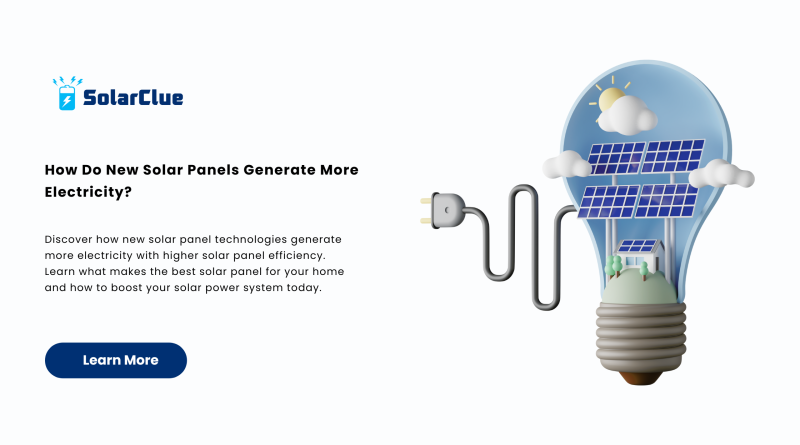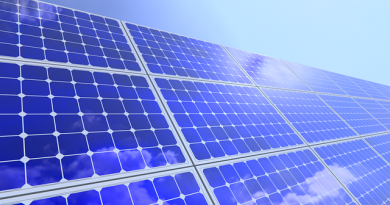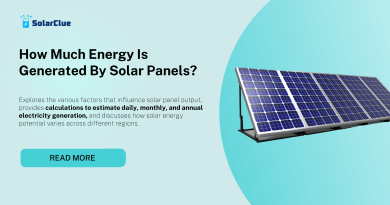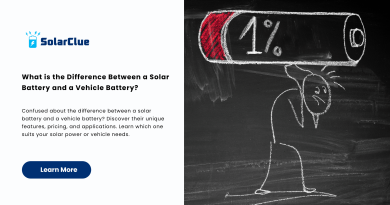How Do New Solar Panels Generate More Electricity?
As global demand for clean energy rises, solar panel technology has advanced significantly. These improvements aim to generate more electricity, reduce costs, and increase adoption across households and businesses. If you’re wondering how new solar panels generate more electricity, this blog uncovers the innovations behind modern solar power systems, focusing on solar panel efficiency, materials, and smart installations.
Table of Contents
- 1 Understanding Solar Panel Efficiency
- 2 Advanced Photovoltaic Materials
- 3 Multi-Junction Cells for Better Light Capture
- 4 Bifacial Solar Panels
- 5 Anti-Reflective Coatings and Textured Glass
- 6 Tracking Systems to Follow the Sun
- 7 Improved Inverter Technology
- 8 Energy Storage Integration
- 9 AI and Smart Monitoring
- 10 Climate Adaptability and Durability
- 11 Flexible and Thin-Film Panels
- 12 Government Incentives and Rebates
- 13 Environmental Impact and Sustainability
- 14 Selecting the Best Solar Panel for Home Use
- 15 Installation Matters: Partner with Experts
- 16 The Future of Solar Energy
- 17 Conclusion
Understanding Solar Panel Efficiency
Solar panel efficiency refers to the percentage of sunlight a panel can convert into usable electricity. Traditional panels operated with about 15-18% efficiency, but new technologies now exceed 22% and are steadily improving. Innovations in photovoltaic (PV) cell design, materials, and layering techniques are the key contributors to this boost.
Advanced Photovoltaic Materials
New solar panels incorporate advanced materials like monocrystalline silicon, heterojunction (HJT), and perovskite layers, which have better light absorption capabilities. These materials help reduce energy loss and capture more sunlight during the day, maximizing output for any solar panel for home or business use.
Multi-Junction Cells for Better Light Capture
Unlike traditional single-layer panels, multi-junction cells use multiple layers of semiconductors to absorb various light wavelengths. This approach drastically enhances solar panel efficiency. Some experimental models now achieve over 40% efficiency in lab settings, giving us a glimpse into the future of the best solar panel technologies.
Bifacial Solar Panels
Bifacial panels capture sunlight from both the front and rear surfaces. This means they can reflect and utilize light bouncing off surrounding surfaces like rooftops or ground reflectors. The result is up to 15% more electricity generated compared to conventional panels—a significant upgrade in solar power system design.
Anti-Reflective Coatings and Textured Glass
Modern solar panel designs include anti-reflective coatings that allow more sunlight to penetrate the cell surface. Textured glass further helps scatter light effectively, enabling more photons to be absorbed rather than reflected away, thus improving energy yield.
Tracking Systems to Follow the Sun
To optimize sunlight exposure throughout the day, some advanced systems now include solar trackers. These mechanical setups rotate panels to follow the sun’s path, maintaining optimal angles for energy production. When integrated with solar panel installation, these trackers can boost output by 20-30%.
Improved Inverter Technology
String inverters and microinverters play a crucial role in converting solar energy into usable electricity. New inverters offer better conversion efficiency and lower energy loss. When choosing the best solar panel, it’s vital to also evaluate the quality of the inverter within your solar power system.
Energy Storage Integration
Pairing solar panels with efficient battery storage allows homeowners to use solar power even during non-sunny hours. This not only enhances the effectiveness of your solar panel for home but also reduces reliance on grid power.
AI and Smart Monitoring
Artificial intelligence and IoT-based monitoring systems now help analyze energy usage patterns, detect faults, and adjust settings for optimal performance. These smart tools ensure your solar panel installation delivers consistent and improved output over time.
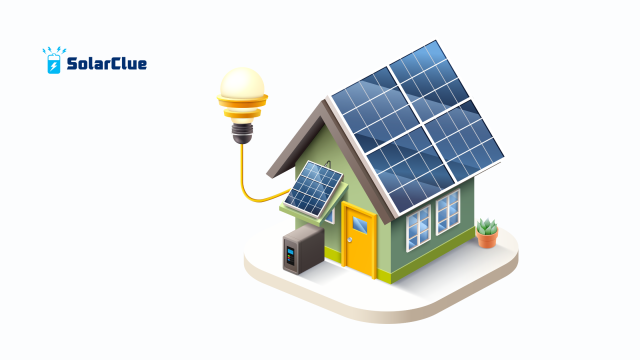
Climate Adaptability and Durability
New panels are designed to be more resistant to extreme weather conditions, including heat, snow, and heavy rains. Enhanced durability leads to fewer breakdowns and consistent power generation, making them the best solar panel options for long-term use.
Flexible and Thin-Film Panels
Thin-film panels are lightweight and versatile, allowing them to be installed on curved surfaces or less conventional areas. Although they currently have slightly lower efficiency, their adaptability adds value to specific solar power system needs.
Government Incentives and Rebates
Government policies and subsidies encourage the adoption of efficient solar panel systems. These incentives reduce installation costs and provide quicker return on investment, motivating more people to choose the best solar panel technology available.
Environmental Impact and Sustainability
Modern panels are manufactured using more eco-friendly processes and are often recyclable, minimizing their environmental footprint. Choosing a high-efficiency solar panel for home supports both personal energy savings and global sustainability goals.
Selecting the Best Solar Panel for Home Use
To find the best solar panel for your needs, consider the following:
- Efficiency rating (aim for 20% or higher)
- Panel material (monocrystalline preferred)
- Warranty and lifespan
- Compatibility with inverters and storage
- Installation environment (roof angle, shading, climate)
Explore trusted platforms like SolarClue to compare models, prices, and professional installers in your area.
Installation Matters: Partner with Experts
Proper solar panel installation is as crucial as panel quality. Poor alignment or setup can reduce energy output by up to 30%. Hiring certified professionals from resources like blog.solarclue.com ensures your solar power system operates at peak efficiency.
The Future of Solar Energy
With continued research and global investment, solar technology will only get smarter and more efficient. From space-grade PV cells to AI-optimized grids, the solar panel industry is evolving faster than ever, promising a brighter, cleaner energy future.
Conclusion
New solar panel technologies are revolutionizing the way we generate electricity. With enhanced materials, smarter installations, and AI-based optimizations, today’s panels deliver greater efficiency and power than ever before. If you’re considering upgrading your solar power system or installing a new solar panel for home, now is the time. Embrace innovation and watch your energy bills drop while your sustainability rises.
Explore the world of solar energy with confidence. Visit SolarClue or check out our expert tips on blog.solarclue.com to start your solar journey today!
FAQs
1. What is the most efficient solar panel available today?
The best solar panel models now reach 22-24% efficiency, with some experimental panels achieving even higher rates in labs.
2. How much electricity can a solar panel generate daily?
It depends on panel size, location, and sun exposure. A typical 300W solar panel for home can produce 1.2-1.5 kWh per day.
3. Are bifacial solar panels worth it?
Yes, especially in open areas with reflective surfaces. They can increase solar panel efficiency by 10-15%.
4. Can I install solar panels myself?
DIY is possible, but for optimal safety and efficiency, professional solar panel installation is recommended.
5. How long do solar panels last?
Most solar panel systems last 25-30 years with minimal maintenance, offering long-term energy savings.
Ready to power your life with the sun? Take your first step towards energy independence at SolarClue.com and don’t miss out on expert insights at blog.solarclue.com!

